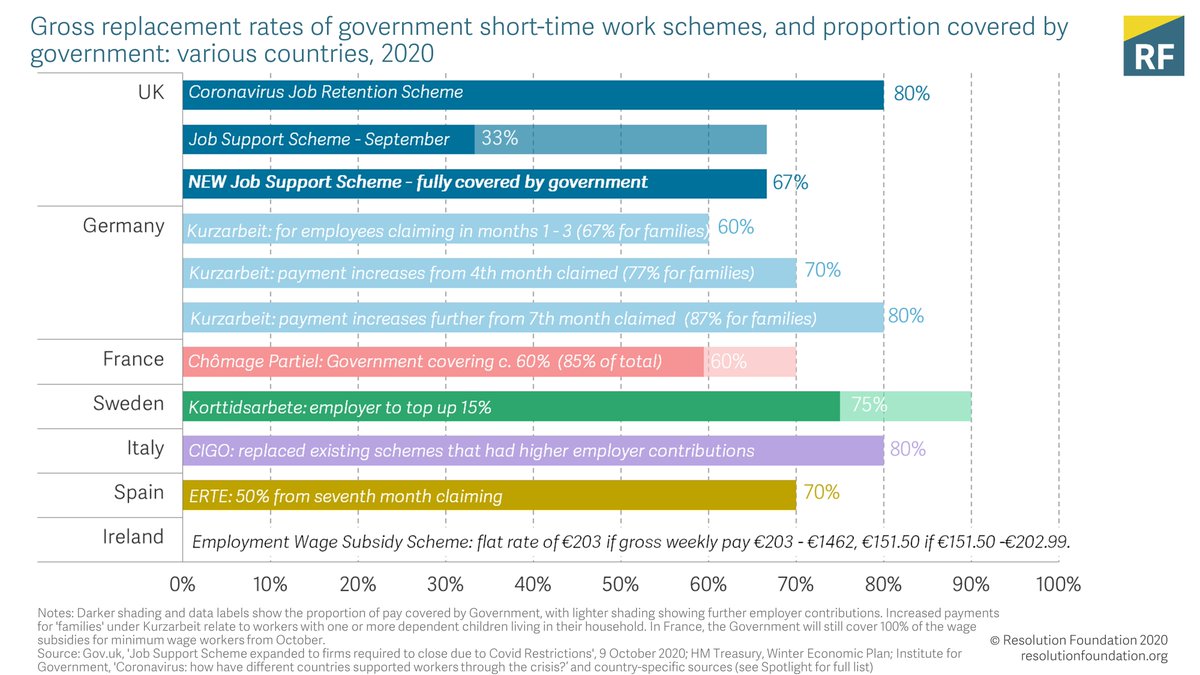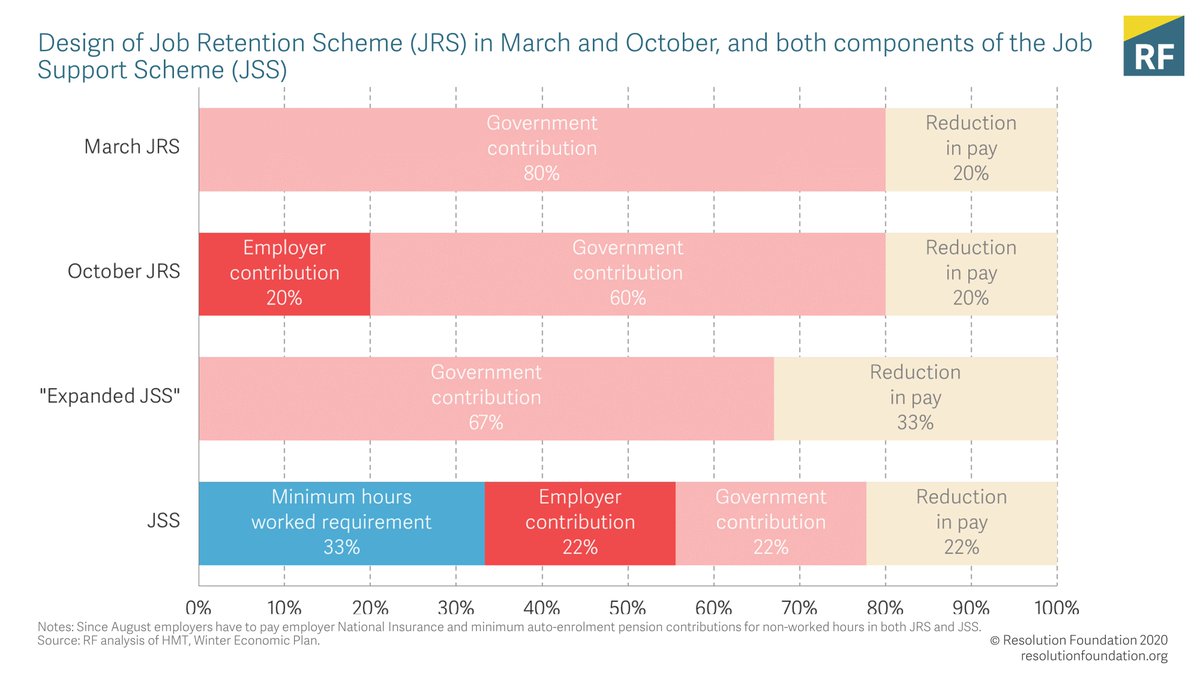
Our latest report out today examines the impact of the pandemic on the labour market so far. With the furlough scheme ending this week, our analysis reveals the true nature of Britain’s jobs crisis. A short thread… resolutionfoundation.org/publications/j…
Around one-in-five young people, and over one-in-five black, Asian and minority ethnic (BAME) workers, who were furloughed during lockdown have since their lost jobs – and just one-in-three young people who have lost their jobs have been able to find new work. 

Since February, the incidence of insecure work declined most among the youngest and the lowest-paid, reflecting the fact that these groups worked on insecure contracts at much higher-than-average rates even before the crisis. 

The gap between the proportion of lower and higher-paid employees reporting lower pay than in pre-crisis times has narrowed compared to our May survey. This is predominantly due to the winding down of the furlough scheme. 

Our analysis finds that the recent rise in unemployment – which is expected to keep climbing over the coming months – is mostly the result of fewer unemployed people being able to find new work than normal. 

Fewer than half (43 per cent) of those who have lost their jobs since March had found new work by September, falling to just one-in-three (33 per cent) among young people, and 36 per cent of people in hard-hit sectors like hospitality, leisure and non-food retail. 
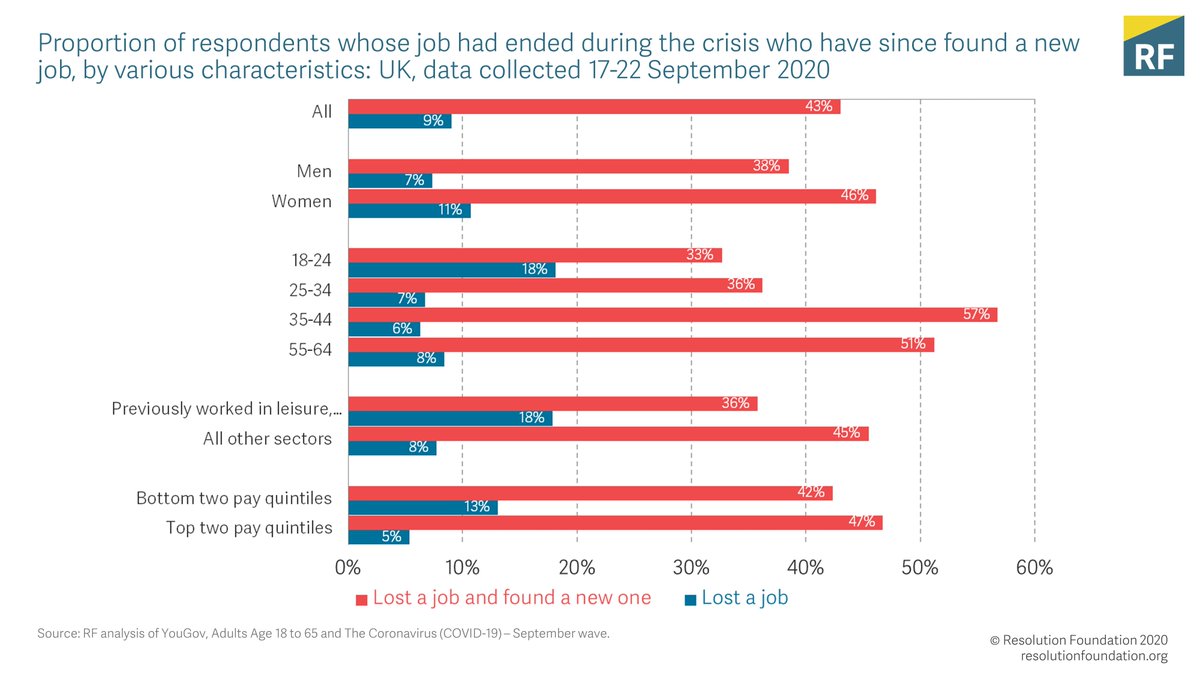
People are more likely to look for vacancies in the leisure sector – which had the fewest listed vacancies – than the sectors with the most listed vacancies (social care). This suggests the UK is unlikely to see a swift reallocation of labour, which will not help unemployment. 

The employment effects so far have been worst for the most deprived areas, where 21 per cent of workers were either not working, furloughed, or had lost hours (and pay) in early September, compared to 17 per cent for the UK as a whole. In London, this rose to 28 per cent. 
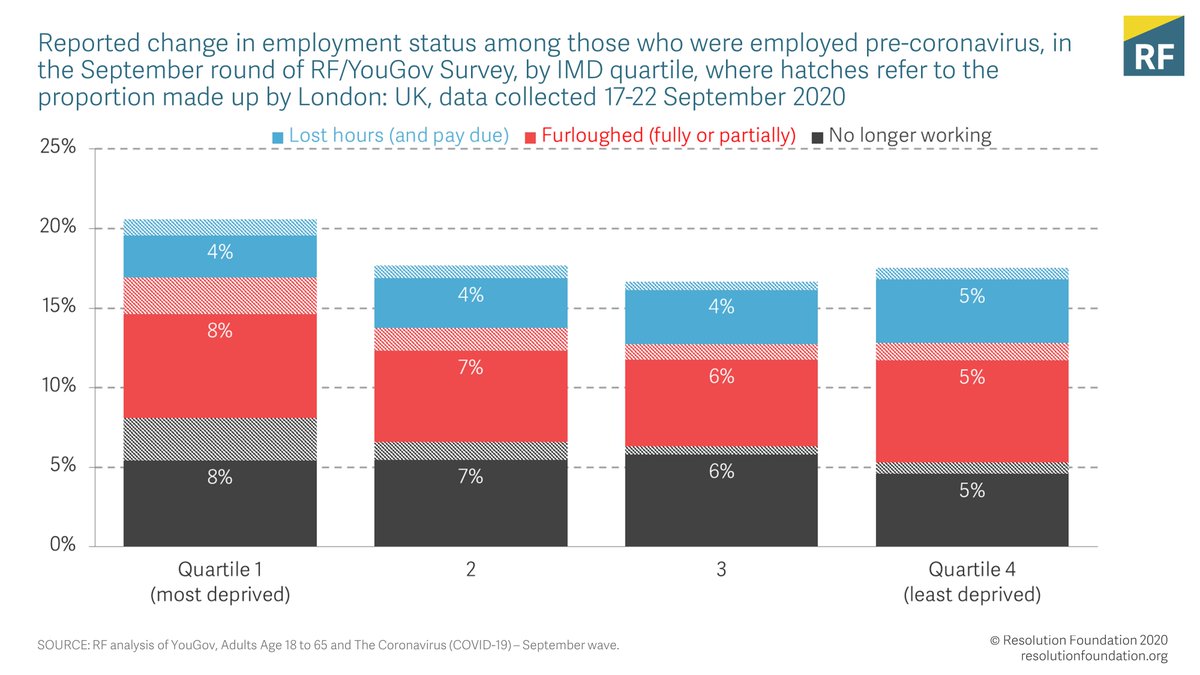
While the initial effects of the crisis bore heavily on the youngest and lowest paid, concerns over pending redundancies are common across all age groups – an indication that labour market disruption will likely become more widespread over time. 

With the crisis likely to accelerate over the winter as restrictions tighten and support becomes less generous, policymakers should aim to protect the incomes of those most affected, limit the rise in unemployment, and enable people to play their part in suppressing the virus. 
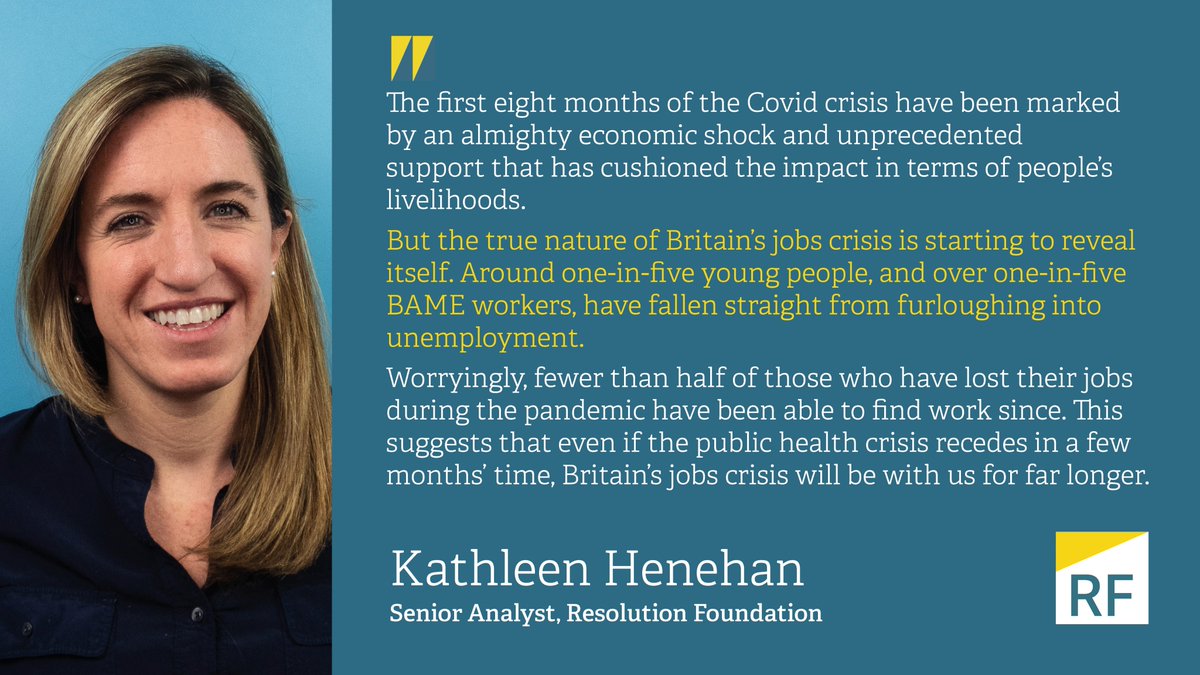
The impact that this crisis has had so far on the UK labour market is substantial, with unemployment rising alongside declines in both hours and pay. Read the full report here: resolutionfoundation.org/publications/j…
Join us at 2pm today alongside @FrancesOGrady and @cbicarolyn to discuss these findings, what the coming months might hold, and whether further policy interventions are needed to stem rising unemployment. Register here: resolutionfoundation.org/events/jobs-jo… 

• • •
Missing some Tweet in this thread? You can try to
force a refresh




